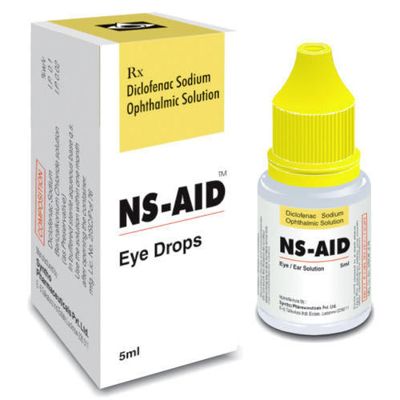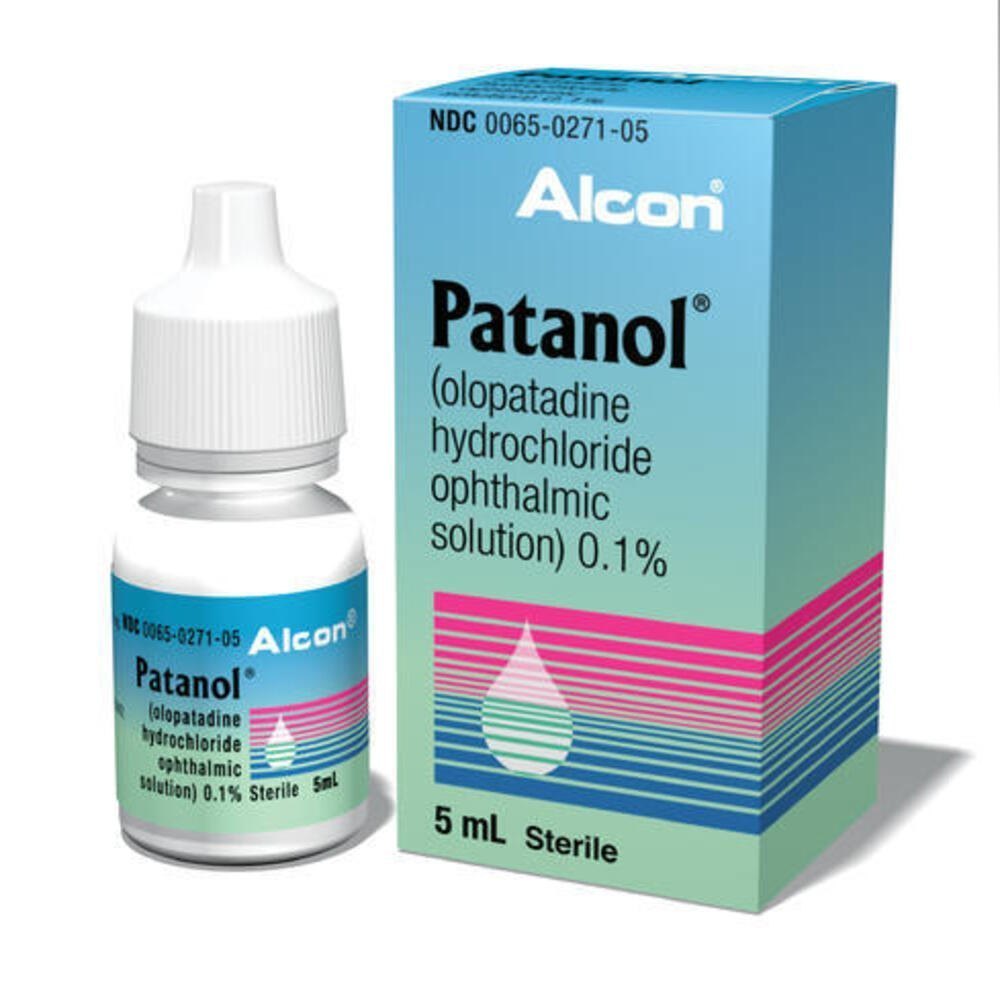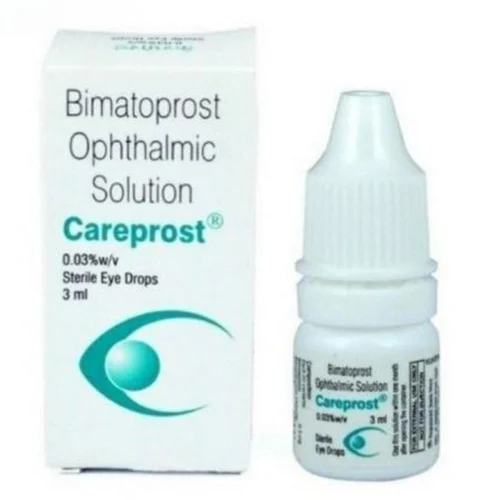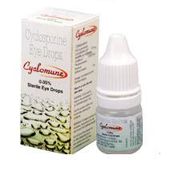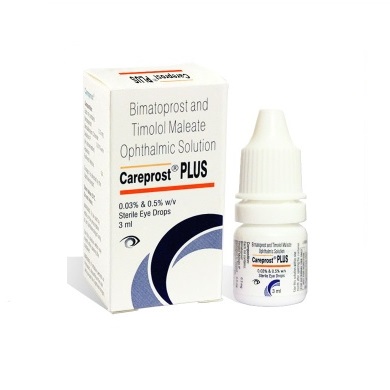NS-AID - 5 ML EYE DROP
When it comes to effective eye care, Diclofenac Sodium, a nonsteroidal anti-inflammatory drug (NS-AID), takes the spotlight as a remarkable solution that can alleviate pain, reduce inflammation, and bring relief to various eye discomforts. This comprehensive guide will delve into the depths of NS-AID - 5 ML Eye Drops, uncovering its uses, benefits, precautions, and everything you should consider to make the most out of this remarkable medication.
Unveiling the Power of NS-AID - 5 ML EYE DROP
Diclofenac Sodium, a member of the nonsteroidal anti-inflammatory drug (NS-AID) family, stands as a stalwart fighter against inflammation and pain. NS-AIDs are renowned for their ability to subdue substances that trigger pain and inflammation in the body.
The Versatile Uses of NS-AID - 5 ML EYE DROP
NS-AID Eye Drop emerges as a pivotal solution, meticulously designed to tackle the swelling and pain that often plague the eyes. Whether it's a result of a surgical procedure or an allergic reaction, this eye drop presents a potent remedy. Moreover, it doesn't stop at eye-related issues; NS-AID - 5 ML Eye Drop extends its efficacy to address various pains experienced in different parts of the body.
Precautions: When to Avoid NS-AID - 5 ML EYE DROP
To ensure safe and effective usage of NS-AID - 5 ML Eye Drop, certain precautions must be adhered to. Refrain from using this medication if:
- You exhibit allergies to the drug or other NS-AIDs like aspirin.
- You are currently dealing with an eye infection.
- You experience easy bleeding or have a history of blood clotting issues.
- You suffer from conditions such as polyps in the nose, asthma, or blood clotting problems.
Consultation: A Step Toward Safe Usage
Your healthcare provider should be kept informed about your medical status before embarking on NS-AID - 5 ML Eye Drop usage. Specifically, inform your doctor if:
- You are planning to become pregnant or are already pregnant, as this medication carries risks for unborn babies.
- Breastfeeding is on the horizon, as NS-AID - 5 ML Eye Drop can pass into breast milk and pose a threat to the baby.
- You are concurrently using other pain relievers.
Dosage: The Key to Effective Relief
Compliance with your physician's dosage instructions is paramount. This ensures optimal results and minimizes potential risks. Never modify your dosage without consulting your doctor. Typically, a single drop is recommended for each eye during a session.
Proper Usage of NS-AID - 5 ML EYE DROP
The correct application of NS-AID - 5 ML Eye Drop is pivotal for its effectiveness. Here's how to apply it:
- Thoroughly wash your hands before handling the eye drop.
- Gently open the bottle cap and tilt your head backward.
- Pull down the lower lid of the eye in which you're applying the drop.
- Administer a single drop and lightly press the bottle.
- Close your eye for about a minute.
- Repeat the process for the other eye.
- Cap the bottle securely without touching the nozzle.
Duration: Following the Course
Adhering to the prescribed duration of NS-AID - 5 ML Eye Drop usage is essential. This promotes quicker recovery and ensures that the medication's full benefits are realized. Always complete the course of treatment as advised by your healthcare provider.
Managing Overdose and Missed Doses
Overdosing on NS-AID - 5 ML Eye Drop is an unlikely scenario. In the event of an overdose, seek immediate medical attention or contact the nearest clinic. If you miss a dose, apply it as soon as you remember. However, if the time for your next dose is near, skip the missed dose to prevent potential harm.
Navigating Potential Side Effects
While NS-AID - 5 ML Eye Drop is generally well-tolerated, there are potential side effects that might necessitate medical attention. Keep an eye out for symptoms such as eye irritation, vision problems, itching, glaucoma, cataracts, eye pain, redness in the eyes, and eye infections. If you experience any of these issues, promptly consult your healthcare provider.
Avoiding Drug Interactions
NS-AID - 5 ML Eye Drop interacts with certain medications, which underscores the importance of reading labels carefully. Inform your doctor if you are taking any of the following:
- Blood thinning medicines like cyclosporine, diuretics, or warfarin.
- Digoxin.
However, this list isn't exhaustive. Numerous other medications could interact with Diclofenac Sodium. To ensure your safety, communicate with your doctor about all the medications you are currently taking. Refrain from introducing new drugs without your doctor's approval.
Pro Tips for NS-AID - 5 ML EYE DROP Usage
Here are some expert tips to enhance your NS-AID - 5 ML Eye Drop experience:
- Strictly adhere to your physician's prescription.
- Store the eye drop bottle out of children's reach.
- Keep the medication in a cool and dry environment.
- Once opened, use the eye drops within four weeks to prevent ineffectiveness and potential infections.
Q-Can a contaminated dropper result in severe eye infections?
Absolutely, a contaminated dropper has the potential to lead to severe eye infections. The eyes are incredibly sensitive organs, and any form of contamination introduced through the dropper can have serious consequences.
When using eye drops, maintaining strict hygiene is paramount. A contaminated dropper can introduce harmful bacteria or pathogens directly into the eye, leading to infections such as conjunctivitis (pink eye), styles, or even more severe conditions. These infections can cause redness, itching, pain, discharge, and impaired vision.
To prevent such risks, it's crucial to follow proper application techniques. Wash your hands thoroughly before handling the dropper and the eye drop bottle. Avoid touching the dropper's tip to any surface, including your eye, as this can introduce contaminants. If the dropper or the bottle becomes contaminated, it's advisable to discard the remaining contents and use a new, uncontaminated bottle.
Furthermore, avoid sharing eye drops with others, as this can also spread infections. If you notice any unusual symptoms after using eye drops, such as increased redness, discomfort, or changes in vision, it's imperative to seek medical attention promptly.
Remember, maintaining hygiene and using uncontaminated droppers are essential steps in safeguarding your eye health and preventing potentially severe infections.
Q-Who cannot use these NS-AID 5ml eye drops?
Certain individuals should avoid using NS-AID 5ml Eye Drop due to potential risks and interactions. If you fall into any of the following categories, it is recommended that you refrain from using this medication:
- Allergic Reactions: If you have a known allergy to Diclofenac Sodium or other nonsteroidal anti-inflammatory drugs (NS-AIDs) like aspirin, using NS-AID 5ml Eye Drop can trigger adverse reactions.
- Eye Infections: If you are currently dealing with an eye infection, using NS-AID 5ml Eye Drop could exacerbate the condition or hinder its recovery.
- Bleeding Disorders: Individuals who experience easy bleeding or have a history of blood clotting problems should avoid using NS-AID 5ml Eye Drop, as it can potentially exacerbate these issues.
- Nasal Polyps and Respiratory Conditions: If you suffer from nasal polyps, asthma, or other respiratory conditions, using NS-AID 5ml Eye Drop may lead to complications or worsen your symptoms.
- Pregnancy: Pregnant individuals or those planning to become pregnant should exercise caution with NS-AID 5ml Eye Drop. This medication carries risks for unborn babies and should be avoided unless recommended by a healthcare provider.
- Breastfeeding: If you are breastfeeding, using NS-AID 5ml Eye Drops is not advisable. The medication can pass into breast milk and potentially harm the nursing baby.
- Use of Pain Relievers: If you are already using other pain relievers or medications, consult your doctor before incorporating NS-AID 5ml Eye Drop into your regimen. Drug interactions can occur, affecting the safety and effectiveness of both medications.
Remember, the decision to use NS-AID 5ml Eye Drop should always be made in consultation with a qualified healthcare professional. If you belong to any of the aforementioned categories, it is crucial to discuss alternative treatment options with your doctor to ensure your well-being and avoid potential complications.
Q-Can I apply the eye drops while putting contact lenses on?
Using NS-AID 5ml Eye Drop while wearing contact lenses requires careful consideration and proper guidance to ensure your eye health and comfort. Here's what you need to know:
Applying eye drops while wearing contact lenses can be a bit tricky. Contact lenses create a barrier between the eye's surface and the eye drop solution, potentially affecting the absorption and effectiveness of the medication. Moreover, there's a risk of contamination, discomfort, and even interactions between the eye drop solution and the contact lens material.
To navigate this situation effectively, consider the following steps:
- Remove Contact Lenses: It is generally recommended to remove your contact lenses before applying eye drops. This allows the eye drop solution to directly come into contact with your eye's surface and be absorbed more effectively.
- Wait Before Reinserting: After applying the eye drops, wait for a sufficient amount of time before reinserting your contact lenses. This time frame can vary based on the specific eye drop and your doctor's recommendation. Waiting ensures that the medication has been absorbed properly and reduces the risk of dilution or interactions.
- Consult Your Eye Care Professional: Always consult your eye care professional before combining contact lenses and eye drops. They can provide personalized guidance based on your eye condition, the specific eye drops you're using, and the type of contact lenses you wear.
- Specialized Eye Drops for Contacts: Some eye drops are formulated to be compatible with contact lenses. These are often labeled as "contact lens rewetting drops" or "lubricating eye drops for contacts." If your doctor recommends using eye drops while wearing contact lenses, consider using these specialized formulations.
- Hygiene and Care: If your doctor approves of using eye drops with contact lenses, maintain rigorous hygiene. Wash your hands thoroughly before handling the eye drop bottle and your contact lenses. Avoid touching the dropper tip to your eye or the contact lens.
- Seek Professional Advice: If you experience discomfort, irritation, or any adverse effects while using eye drops with contact lenses, remove the lenses and seek advice from your eye care professional.
Remember, while some eye drops may be compatible with contact lenses, it's always best to err on the side of caution and follow your doctor's recommendations. Your eye health is a priority, and proper care ensures that you receive the full benefits of the medication while minimizing any potential risks or complications.
Q-Can I continue to use the medicine after 14 days post-cataract surgery?
- After undergoing cataract surgery, the postoperative period is crucial for your eye's healing and recovery. While the specific instructions may vary based on your individual case and your doctor's recommendations, using NS-AID 5ml Eye Drop for an extended period after 14 days post-surgery might not be necessary or advisable.
- Cataract surgery involves the removal of the cloudy lens and the insertion of an artificial lens to restore clear vision. The healing process typically spans several weeks, during which your eye needs time to adjust and heal properly.
- In the initial days after cataract surgery, eye drops are often prescribed to prevent infection, reduce inflammation, and facilitate healing. However, the duration of usage and the specific eye drops can vary.
- As you reach the 14-day mark post-surgery, your doctor may reassess your condition and potentially adjust your treatment plan. Continuing to use NS-AID 5ml Eye Drop beyond this point may not provide additional benefits and could potentially lead to unnecessarily prolonged usage.
- It's crucial to follow your doctor's instructions diligently. If you have concerns or questions about using NS-AID 5ml Eye drops beyond 14 days after cataract surgery, don't hesitate to consult your healthcare provider. They will provide personalized guidance based on your progress, any remaining inflammation, and the best course of action for your post-operative care.
Remember, your eye health is of paramount importance, and collaborating closely with your doctor will ensure optimal recovery and the best possible outcomes after cataract surgery.
Conclusion
NS-AID 5ml Eye Drop stands as a valuable asset in the realm of eye care, offering relief from pain, inflammation, and discomfort. Diclofenac Sodium, the nonsteroidal anti-inflammatory drug at its core, holds the power to subdue inflammation and alleviate pain, making it a remarkable solution for various eye-related issues.
This comprehensive guide has taken you through the depths of NS-AID - 5 ML Eye Drops, from its remarkable capabilities to its versatile uses. It has shed light on precautions that should be taken to ensure safe usage, including individuals who should avoid this medication due to potential risks or interactions. We've also navigated the intricacies of using NS-AID 5ml Eye Drop in conjunction with contact lenses, emphasizing the importance of expert guidance and proper hygiene.
Post-cataract surgery, this guide has clarified that while initial usage of eye drops is crucial for healing and prevention of complications, continuing the use of NS-AID 5ml Eye Drops beyond the 14-day mark may not be necessary or advised. Always adhere closely to your healthcare provider's recommendations during your recovery journey.
As you embark on your journey to optimal eye health and well-being, remember that your doctor's guidance is paramount. The safety, comfort, and effectiveness of NS-AID 5ml Eye Drop are intricately tied to proper usage, diligent care, and expert consultation. By arming yourself with knowledge and adhering to best practices, you can harness the full potential of NS-AID 5ml Eye Drop and experience the relief and well-being it offers.
Your eye health is a treasure worth protecting, and with the insights provided in this guide, you're equipped to make informed decisions and prioritize your vision's vitality. If you have further queries or require additional information, don't hesitate to reach out to your healthcare provider or trusted medical professional. Here's to your journey towards clear, comfortable, and vibrant eyesight.
Your review is submitted successfully. It will be live after approval, and it takes up to 24 hrs.


